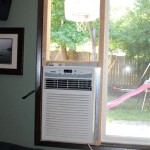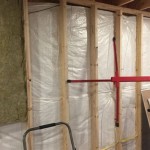R Value For Basement Walls
R-value is a measure of thermal resistance, which is the ability of a material to resist the flow of heat. The higher the R-value, the greater the resistance to heat flow. For basement walls, a higher R-value is desirable because it will help to keep the basement warmer in the winter and cooler in the summer.
The R-value of a basement wall is determined by the thickness and type of insulation used. Common insulation materials for basement walls include fiberglass batts, rigid foam board, and spray foam. The R-value of each type of insulation varies depending on its thickness.
For example, a 2-inch thick fiberglass batt has an R-value of 6.3, while a 2-inch thick rigid foam board has an R-value of 10. A 2-inch thick spray foam has an R-value of 13.
The R-value of a basement wall can also be affected by the presence of thermal bridges. Thermal bridges are areas where heat can easily flow through the wall, such as around windows and doors. To minimize thermal bridging, it is important to seal all gaps and cracks around these openings.
The R-value of a basement wall is an important factor to consider when designing a basement. A higher R-value will help to keep the basement more comfortable and energy-efficient.
Factors to Consider When Choosing an R-Value for Basement Walls
When choosing an R-value for basement walls, there are several factors to consider:
- Climate: The climate in your area will affect the R-value you need for your basement walls. In colder climates, you will need a higher R-value to keep the basement warm in the winter.
- Type of insulation: The type of insulation you use will also affect the R-value of your basement walls. Some types of insulation, such as spray foam, have a higher R-value per inch than other types, such as fiberglass batts.
- Budget: The cost of insulation will also be a factor to consider. Spray foam is typically the most expensive type of insulation, but it also has the highest R-value per inch.
Recommended R-Values for Basement Walls
The recommended R-value for basement walls varies depending on the climate in your area. In general, a higher R-value is recommended for colder climates. The following are recommended R-values for basement walls in different climate zones:
- Climate Zone 1 (Cold): R-15 or higher
- Climate Zone 2 (Moderate): R-13 or higher
- Climate Zone 3 (Warm): R-11 or higher
It is important to note that these are just general recommendations. The specific R-value you need for your basement walls will depend on the factors discussed above.

What R Value Do I Need Johns Manville

Etw Foundation Code Minimum R 10 Continuous Insulation Buildingscience Com

Recommended Insulation Levels For Optimum R Value

R Values And U Factors Of Single Wythe Concrete Masonry Walls Ncma

New York Recommended Home Insulation R Values Zone 4

How To Insulate Basement Walls True Value

Insulation Levels For Cold Hot And Moderate Climates

Basement Wall Insulation Achieving Best Results Rmax

How Much Insulation Does Your Home Need Guide

All About Insulation R Values The Home
See Also








